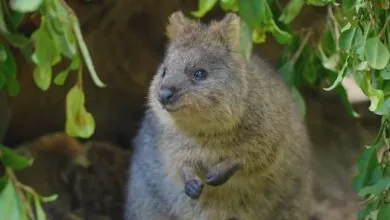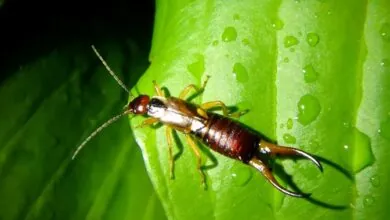Western Honeybee: From Hive Hierarchies to Honey making
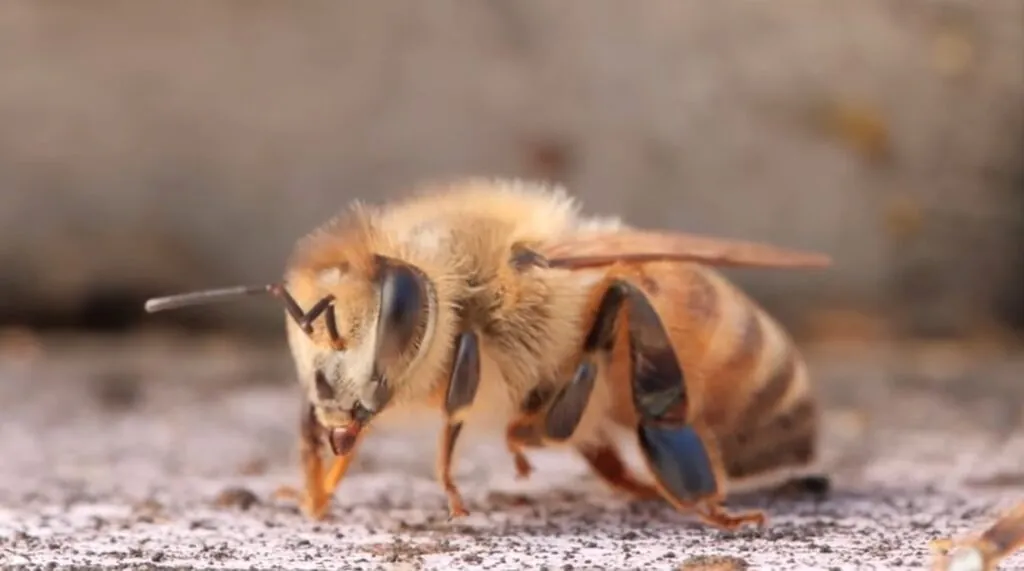
The Western honeybee, scientifically recognized as Apis mellifera, holds more secrets than it golden bounty suggests. Over and above producing the delicious honey we love, these tiny creatures having a mighty impact play a vital role in our ecosystem. But who are these buzzing architects or sweetness? Join me on this journey where we’ll unpack their social structures, hidden talents and the challenges they face.
| Kingdom | Phylum | Class | Order | Family | Genus | Scientific Name | |
| Animalia | Arthropoda | Insecta | Hymenoptera | Apidae | Apis | Apis mellifera |
Origin and Evolution
Evolutionary History
In conjunction with the Western honey bee’s evolution, it possibly evolved from apoid wasps – a superfamily including bees, ants and wasps – around 146 to 74 million years back. Around 100 million years ago, the development of pollen-collecting hairs occurred – an adaptation pivotal for gathering pollen.
Transition to eusociality approximated to have taken place 80 to 60 million years back, leading to complex social structures with defined castes (queen, worker, drone) and cooperative behavior. The evolution of honey production and storage was developed around 30 million years ago.
Owing to geographic isolation and environmental pressures, Apis mellifera – Western honey bee – split from its closest relative, Apis cerana (Eastern honey bee) around 5 million years ago.
Genetic Composition and Diversity
Apis mellifera possesses 32 chromosomes, marked by high genetic diversity compared to other honey bee species. Subspecies of Apis mellifera show distinct genetic variations customized for specific environments and climates. For instance, African bees have distinct genetic markers linked with defensive behavior and thermoregulation relative to European bees.
Environmental Adaptations
In terms of the Western honey bee adaptations, they showcase astounding behavioral adaptations built upon local resources and challenges. For example, they adjust foraging patterns based on flowering seasons and pollen accessibility.
Specific examples include: Himalayan bees that possess longer hairs and thicker exoskeletons for insulation in cold environments, desert bees that forage at night to avoid extreme heat and utilize water-conserving behaviors and African bees that have darker coloration which may offer camouflage and heat tolerance relative to European bees.
Distribution and Population
Geographic Range
Concerning the Western honey bee’s distribution, contemporarily they’re found on every continent except Antarctica. In the annals of time, they’re confined to Africa, Europe and parts of Asia. The introduced range stretched widely during human expansion, particularly since the 17th century. Notable examples include: North and South America, Australia and New Zealand.
Population Dynamics
Approximating the Western honey bees population is challenging due to wild colonies and management complexities. As per the Food and Agriculture Organization of the United Nations (FAO), there’re around 102 million approximated managed hives worldwide in 2021.
Honeybee Species
Western Honeybee (Apis mellifera)
It’s the most renowned and widely domesticated species thanks to its efficient honey production and social behavior. It’s found in Europe, Africa, Asia, North America, South America and Australia.
Eastern Honey Bee (Apis cerana)
The species – smaller and more aggressive relative to the Western honey bee – is not as easily domesticated but produces unique honey flavors. It’s native to Southeast Asia and parts of China.
Philippine Honey Bee (Apis nigrocincta)
These honey bees, known for building small single combs in trees and cavities, are endemic to the Philippines. Regrettably, they’re classified as Vulnerable due to habitat loss and deforestation.
Kozhevnikov’s Honeybee (Apis Kozhevnikov)
The species has similar appearance to Easter honey bees but distinct genetic code. It’s native to Borneo and Malaysia, constructing small colonies in trees and cliffs.
Giant Honey Bee (Apis dorsata)
It’s the largest honey bee species, constructing huge open-air nests and producing large amount of honey. It inhabits South and Southeast Asia, known for aggressive behavior.
Himalayan Giant Honeybee (Apis laborious)
There rare subspecies of Giant honey bee are located in the Himalayas. They produce “mad honey” containing hallucinogenic toxins from certain rhodoendrons.
Black Dwarf Honeybee (Apis andreniformis)
This’s the smallest honeybee species, building single combs in trees and shrubs. It’s chiefly found in Southeast Asia.
Dwarf Honey Bee (Apis florea)
These are tiny, red-bodied species that construct single combs in exposed locations. They’re widespread in South and Southeast Asia – recognized for their fast flight and aggressive defense.
Geography
| Continents | All except Antarctica |
| Countries | Globally widespread, introduced to numerous countries |
| Bio-geographical Realms | Afrotropical, Palearctic, Nearctic, Neotropical, Indomalayan, Australasian |
| Biome | Varied: Meadows, grasslands, savannas, woodlands, forests, deserts, wetlands, urban areas |
| Climate Zones | Temperate, subtropical, tropical |
Habitat
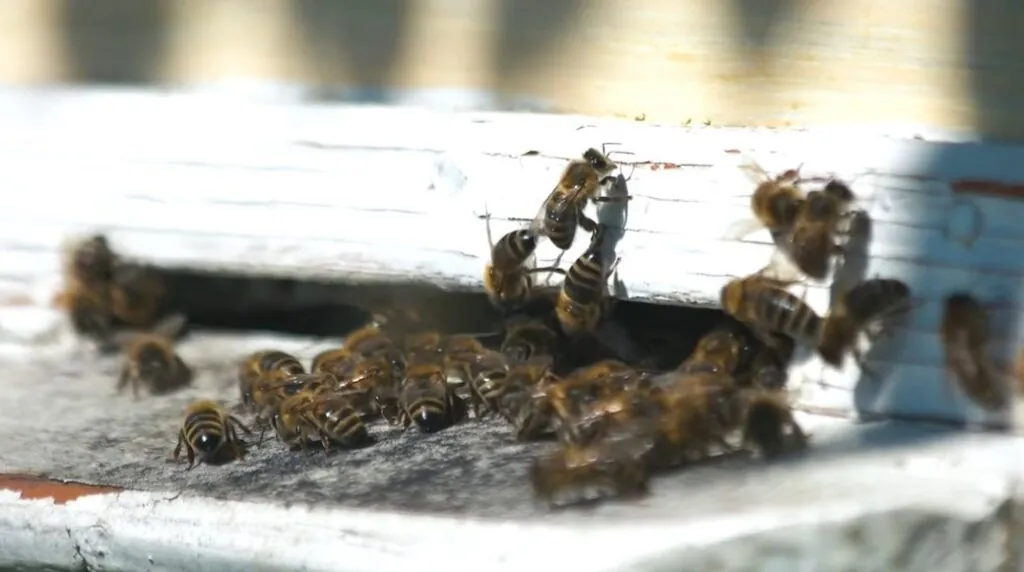
Habitat Preferences
Speaking of the Western honeybee habitat, their preferred ecosystems vary considerably built upon subspecies and local conditions though chiefly found in open and semi-open areas.
- African bees: Savannas, grasslands, woodlands
- European bees: Forests, meadows, agricultural areas
- Mediterranean bees: Garrigue, maquis, coastal shrub-lands
Within these broader ecosystems, honeybees utilize diverse microhabitats influenced by nesting sites and food sources. Their preference for particular food sources depends on season and availability. In temperate regions, they go for clover, dandelion, apple trees and sunflowers while in tropical regions, they prefer mango, coffee, palm trees and legumes.
Habitat Utilization Patterns
In temperate regions, some Western honeybee hives feature nomadic behavior – migrating short distances (up to 200 km) to follow blooming periods. In tropical regions, bees shift between different floral resources built upon seasonal availability while year-round activity is common.
With respect to the Western honeybee’s daily activity, they’re active during daylight hours, expressly between sunrise and sunset. Peak activity generally takes place in mid-morning and mid-afternoon.
On top of that, they’ve specific roles where by scout bees locate new food sources, while others collect nectar, pollen, water and resin. The favorable honey bee hive temperature is (34-35°C) and the bees ensure it. The most conspicuous aspect of the honey bee behavior is their communication that is carried out via the waggle dance that informs nest-mates about location and quality of resources.
5 Western Honeybee Facts
Appearance
Physical Characteristics
To grasp holistically the notion of the Western honey bee size and shape, we’re to spotlight workers, drones and queen separately.
The honeybees are chiefly brown and black, but a fashionista at heat! Variations exist with subspecies and individuals. Let’s have more insights about the Western honey bee’s color and unparalleled markings:
Sexual Dimorphism
The queen has bigger, less hairy and rocking unparalleled markings. The workers are smaller, with those handy pollen baskets on their hind legs. The drones boast larger eyes, shorter abdomen and no stinger or pollen baskets – their mere purpose is mating.
Honeybee Anatomy
| Color(s) | Black and yellow stripes, with variations depending on subspecies |
| Tongue | Long, proboscis-like |
| Claws | Small and hooked, used for clinging to surfaces and manipulating objects |
| Mouth | Contains both mandibles for chewing and a proboscis for sucking nectar |
| Jaw | Strong mandibles used for chewing wax and pollen |
| Feet | Six legs with hairy pads for walking, grooming, carrying pollen |
| Skeleton | External exoskeleton made of chitin, providing protection and support |
Reproduction and Life Cycles
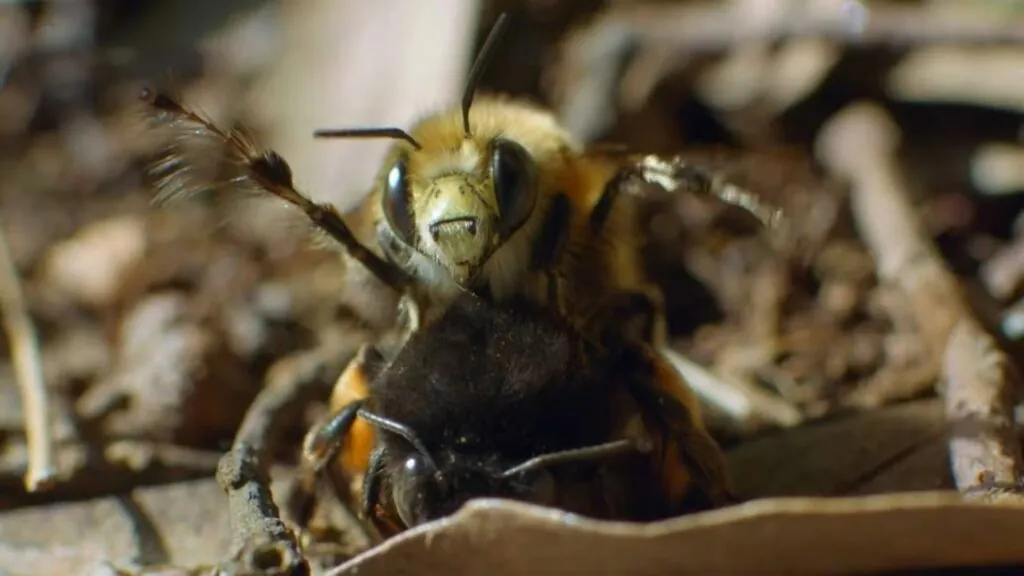
Mating System
Speaking of the honeybee mating system, queen mates once in her lifetime during a nuptial flight, generally with up to 20 drones from distinct hives. It stores sperm throughout her life, using it to fertilize eggs. Workers sterile females and don’t mate at all. The drones mate with multiple queens from different hives to ensure diverse gene pool.
Reproductive Biology
Concerning the Western honey bee reproduction, their breeding season varies based on location and climate, but typically peaks in spring and summer. Only the queen lay eggs and worker bees collectively care for developing young by offering food, cleaning and maintaining hive temperature. Queen focuses merely on egg-laying, producing up to 2,000 eggs per day.
Life Cycle Stages
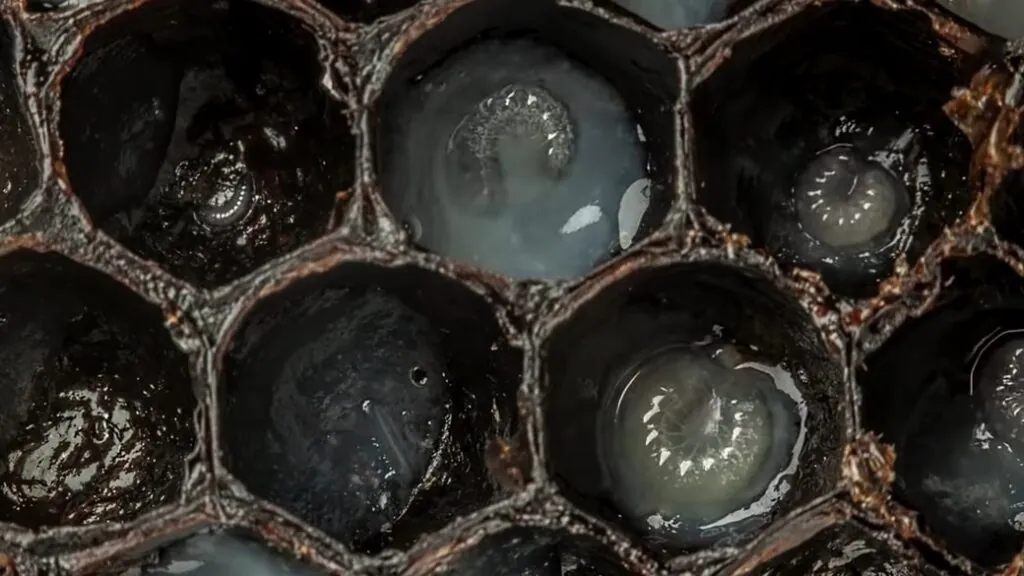
With respect to the Western honeybee’s life cycle, they undergo complete metamorphosis, with four distinct stages:
As for as the Western honey bee lifespan is concerned, the queens can live up to 5 years, while worker bees live for 6 to 8 weeks in summer and longer in winter. Drones live for a few weeks.
Mating Habits
| Mating Behavior Virgin queens mate with multiple drones (males) during “nuptial flights” outside the hive. Drones die after mating. | |
| Reproduction Season Spring and summer, depending on climate and resource availability | |
| Gestation Period 3 days for female larvae, 8 days for male larvae | |
| Baby Carrying Worker bees care for developing larvae and pupae within the hive | |
| Independent Age Adult worker bees begin contributing to hive tasks 21-24 days after emergence. | |
| Female Name Queen bee | |
| Male Name Drone |
Diet and Lifestyle
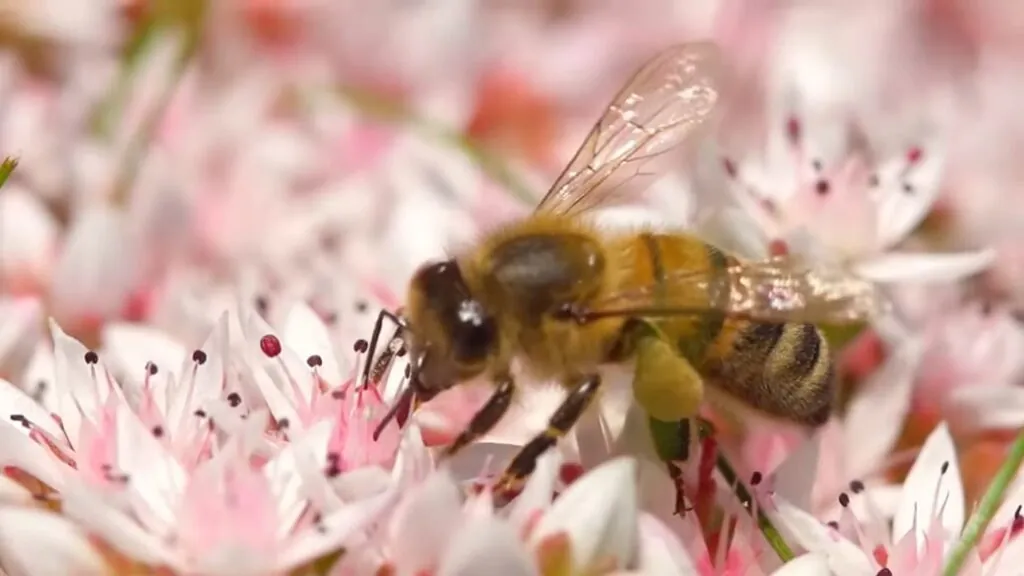
Feeding Ecology
In conjunction with the Western honeybee diet, they feed expressly on plant material, typifying them as herbivores. Their chief food sources are nectar (sugary liquid from flowers) and pollen (rich in protein and lipids). Other sources include honeydew (insect excretions) or water.
Foraging Strategies
Scout bees’ pinpoint food sources and perform “waggle dances” within the hive, communicating precise location and distance and quality. Based on their age, foragers gather particular resources built upon their age and colony needs. They can fly up to 5 kilometers to reach optimal food sources.
Diurnal Activity Patterns
Western honeybees are strictly diurnal, that is, they’re active only during daylight hours, with peak activity around midday. In winter, they become very confined as they conserve energy within the hive.
Social Structure
It is among the most conspicuous Western honey bee’s characteristics. They live in intricate colonies with distinct castes – queen (single reproductive female that lays eggs), workers (sterile females accountable for all other tasks like foraging and brood care) and drones (fertile males whose sole purpose is mating with the queen).
They are capable of using complex chemical signals (pheromones) and dances to communicate within the hive. Each caste has exclusive roles and responsibilities, making sure colony survival and efficiency.
Honeybee Hive
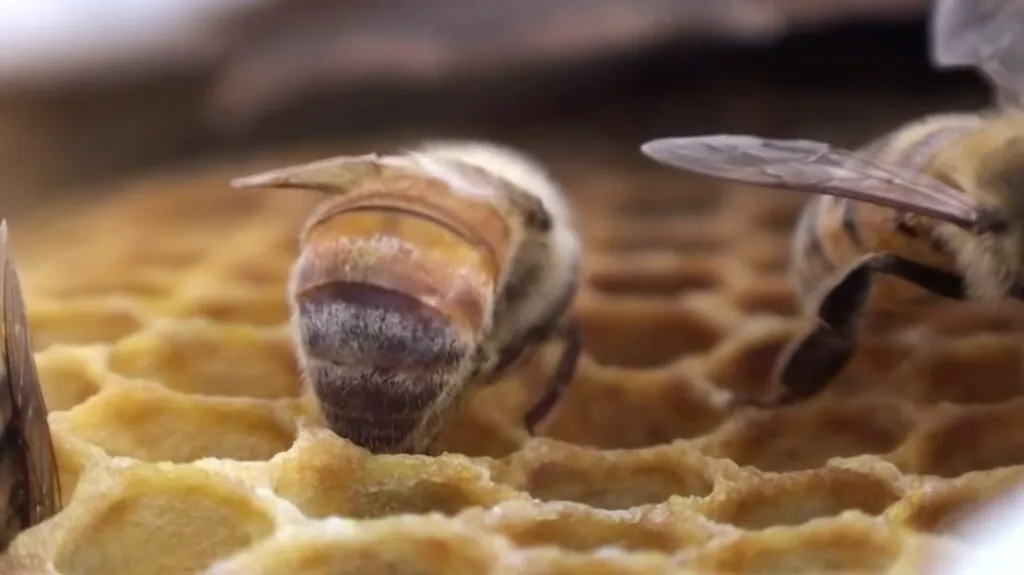
Honeybees construct intricate, hexagonal-shaped honeycombs with minimal wax. They use wing fanning and body heat to maintain a constant temperature (93-95°F) and humidity (~60%) for brood development and honey storage. Sophisticated systems let fresh air circulate while preventing harmful gases and moisture buildup. These honeybee hives are adjusted built on location, climate and colony needs.
Honeybee Sting
Thought pivotal for their survival, honeybee stings can cause discomfort or even life-threatening reaction in humans. Grasping this outstanding mechanism and its impacts is key to appreciating bees and navigating encounters safely.
Anatomy and Mechanism
Dissimilar to wasps and hornets that can retract their smooth stingers, the honey bee’s barbed stinger gets stuck, oftentimes tearing away with venom glands and muscles attached. This “kamikaze” tactic ensures maximum venom delivery but comes at the cost of the bee’s life.
They honeybee venom itself is an enthralling mixture of chemicals. Some components cause pain and inflammation, while others lure other bees to guard the hive.
Local Reactions and Treatment
Albeit the maiden sting feels like a burning prick, the venom initiates histamine release, resulting in redness, swelling, itching and pain. Prosperously, these generally subside within a couple of hours or days.
Removing the honeybee stinger instantly (using tweezers or scraping with a fingernail) can scale down venom injection. You can further ease discomfort applying cold compresses, antihistamines and pain relievers like ibuprofen.
Allergic Reactions and Medical Attention
A seemingly ordinary bee sting can lead to a life-threatening allergic reaction called anaphylaxis for some individuals. The honeybee sting symptoms may encompass wheezing, trouble breathing and rapid heart rate, which entail immediate medical attention. Individuals with known bee allergies carry epinephrine auto-injectors to face such reactions until they reach medical help.
Prevention and Safety Tips
The simple ways to reduce attracting bees include avoiding scented products, wearing closed shoes and staying calm near hives. Note, they sting solely in defense.
Honeybee Sting Facts
Honeybees can pinpoint your body heat and sense your breath, making them more likely to sting if you feel agitated. Some bee species have “heat shock proteins” in their venom that can reduce inflammation! Additionally, bees are capable of stinging other insects, paralyzing them as food for their larvae.
Threats and Conservation
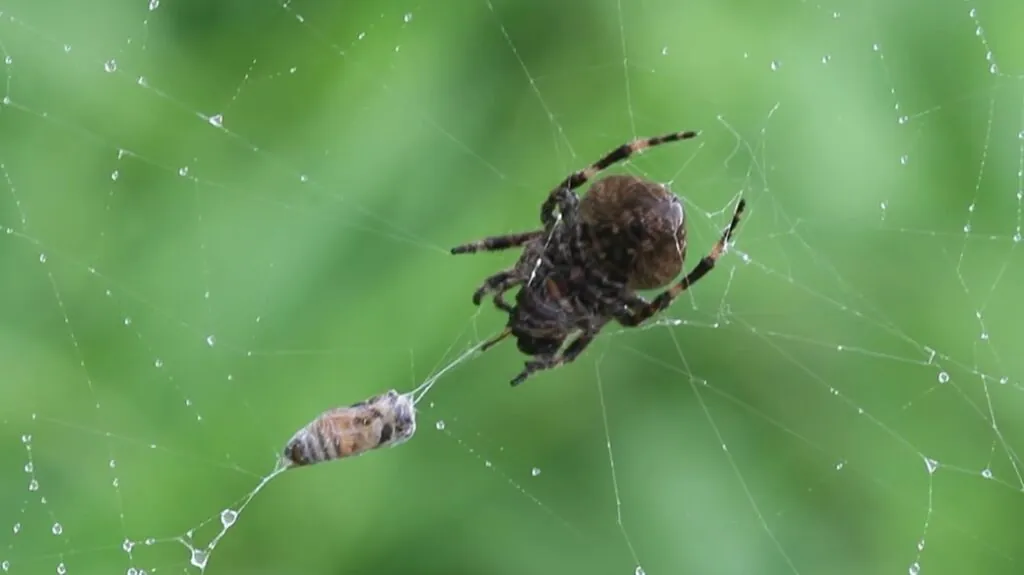
Primary Threats
Western honeybee is typified as Not Extinct by IUCN. These majestic creatures, encounter a plethora of threats, including habitat loss, pesticides and neonicotinoids, varroa mite and other parasites, climate change, diseases like American foulbrood and beekeeping practices. The Western Honeybee, crucial for pollinating crops and wild plants, faces numerous threats. Learn more about Western Honeybees and their conservation at the website of the Bee Informed Partnership.
Conservation Initiatives
Multiple Western honeybees’ conservation efforts are being made to tackle the threats. These initiatives include, promoting pollinator-friendly gardens and agriculture, protecting wildflower habitats, developing bee-friendly pesticides, improving beekeeping practices and breeding resistant bee lines.
Relationship with Humans
Cultural Significance and Symbolism
In ancient Egypt, honey bees were linked with the sun god Ra, signifying rebirth, resurrection and prosperity. In Greek mythology, they’re associated with Artemis – the goddess of the hunt and nature, symbolizing purity, industriousness and community. On the related note, got the scoop of World Bee Day?
In Celtic folklore, there were regarded as messengers of the spirit world, carrying souls between realms. In indigenous American cultures, they’re seen as icons of community, abundance and resilience.
Media and Entertainment
In the realm of art, these species have made their conspicuous presence in multiple genres:
Economic Importance
The global production of honey exceeds 1.4 million metric tons per year, valued at billions of dollars. They Western honey bee honey is rich in protein and nutrients, consumed by humans used in health foods and supplements.
The honey is also the resource for other products, like beeswax – used in candles, cosmetics, polishes and pharmaceuticals (global market estimated at over $800 million). It’s also used in propolis – resinous beehive sealant with potential antibacterial and antiviral properties, used in natural remedies and dietary supplements.
Unique Characteristics
Forge a path through an intriguing journey as we unfold fascinating facts about Western honey bees – truly captivating animals that start with W. Join us in shedding light on their remarkable rundown!
| Common Name | Western Honeybee |
| Other Name(s) | Honeybee, European Honeybee |
| Number of Species | 7-11 (depending on classification method) |
| Lifespan | Queen: 2-5 years |
| Weight | Queen: 200mg |
| Length | Queen: 18-20mm |
| Wingspan | Queen: 18-25mm |
| Top Speed | 40 km/h (25 mph) |
| Predators | Birds, spiders, wasps, frogs, lizards, mammals (bears, skunks) |
| Diet | Nectar and pollen |
| Most Distinctive Feature | Honey production, Social organization, Complex hive structure |
FAQs
